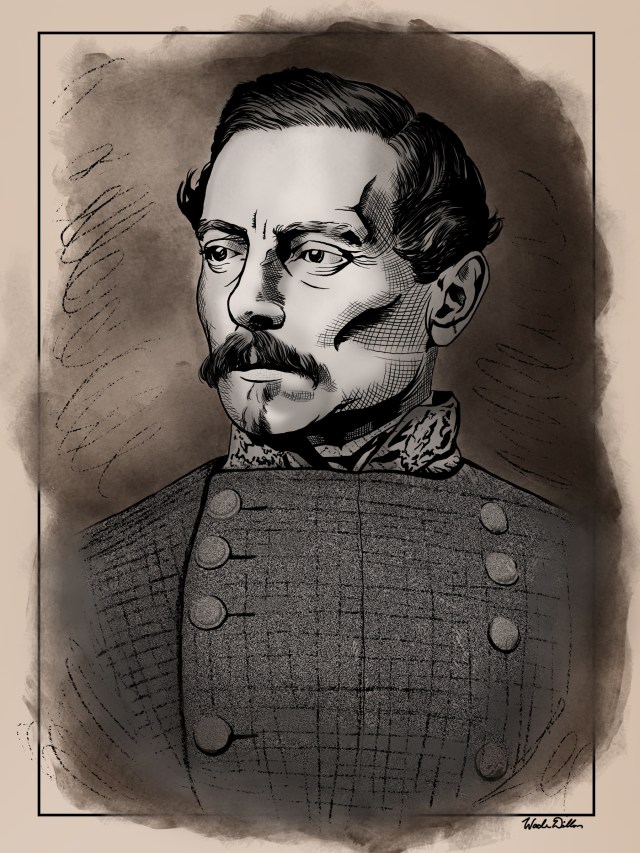One of the more intriguing rocketry legends involves reports of a two-stage, liquid-fueled rocket fired at Washington in the twilight of the Civil War.
According to the story, a Confederate agent enlisted overseas help from Lord Kelvin to deliver liquid oxygen, and Ernst Mach for a turbine engine design and gyroscope. Constructed along the banks of the James River, the rocket would be fired from a tube buried in the mud, fashioned from a string of naval gun barrels. Matthew Fontaine Maury, chief of harbor defenses, calculated the trajectory for the hundred-mile missile flight, scheduled for March of 1865.

On the day of the launch, Jefferson Davis and other officials signed their name to the warhead and then stepped back to watch the launch. Scouts were placed at intervals to track the flight. The first stage was recovered and hidden, though observers lost contact with the second stage. Perhaps the rocket gained orbit, or so the story goes.
Two-stage rockets date back as far as 1300 A.D. But liquid oxygen is generally thought to be first manufactured in 1877, oxygen being one of six gasses that resisted the liquification efforts of Michael Faraday.
Mach, a physicist known for his study of shock waves (the ratio of speed to that of the speed of sound was named for him), was a professor of mathematics at the University of Graz as the Civil War neared its end. William Thompson, 1st Baron Kelvin, a physicist known for his studies of thermodynamics (the scale of absolute temperatures was named for him), was busy working on the transatlantic cable. Great names to drop, but not likely candidates for anything beyond fiction.
Recently, the MythBusters television show tackled the legend. Could they build a rocket that would perform according to the story? They used nitrous oxide (because of the difficulty of working with oxygen). They fashioned fins for stabilization, since the gyroscope device in the legend seemed so unlikely. For ignition, they used an extremely volatile composition called gun cotton. Despite predictions of possible disaster, the MythBuster team got their rocket airborne. It flew about 500 yards. Myth busted.
The first mention I could find of the legend was author Burke Davis’s book “Our Incredible Civil War.” If there were any records of an actual attempt, they were destroyed when the Confederates burned files before the fall of Richmond.
But the basic story came from somewhere, right? In my novel, Dread Tribunal of Last Resort, Decker Brown is a fledgling scientist who wonders aloud about the possibility of using liquid gas in a rocket design. The officer he is speaking to is intrigued, and promises to mention the idea to the War Department. And that’s where I leave things…a snippet of conjecture meant to fuel a legend—my take on the story of the Confederate rocket.
(The accompanying art is the work of Wade Dillon. You can reach him at wadedillonart.com.)
__________________________
“Annotated Mythbusters.” Kwc.org. 29 Oct. 2019 <http://kwc.org/mythbusters/2005/10/mythbusters_confederate_rocket.html>.
Davis, Burke. The Civil War, strange & fascinating facts: Our Incredible Civil war. New York: Fairfax P, 1982.







